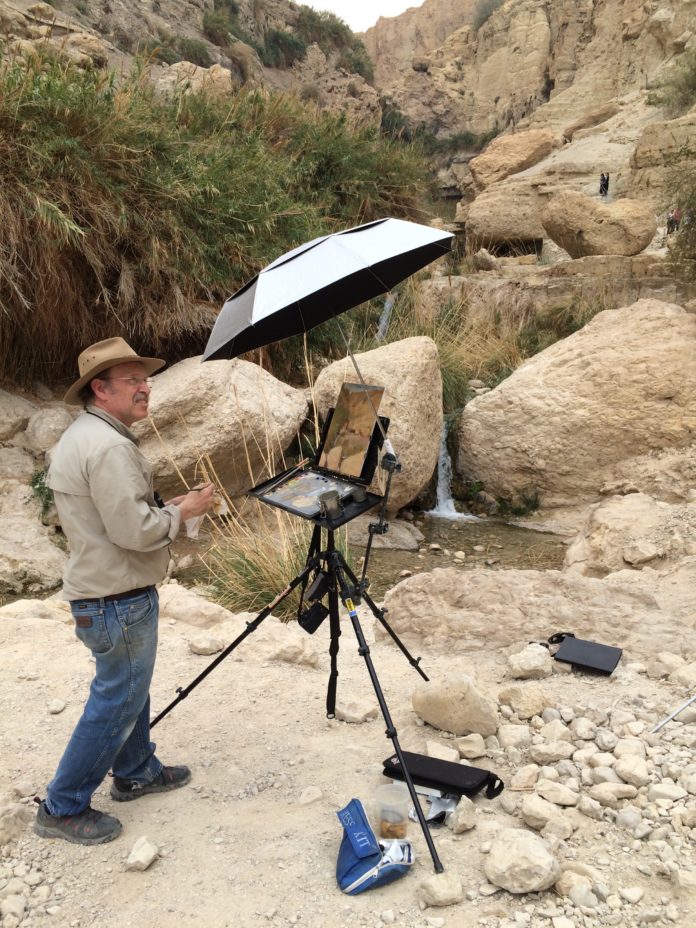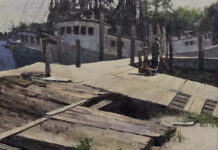American artists James Coe and Debby Kaspari were part of a group that painted for 10 days in one of the cradles of civilization. No matter how remote the location, they saw numerous signs of human activity. That’s the nature of the Mideast.
The duo were part of 20 artists participating in the Artists for Nature project “Bringing the Dead Sea to Life Through Art and Music,” a collaboration involving Israeli, Jordanian, European, and American artists with the goal of raising awareness about the fragile ecosystem surrounding the Dead Sea, which straddles Jordan, Palestine, and Israel. The group painted along the Dead Sea on both the Israeli and Jordanian sides, and they also ventured into the Negev Desert to further explore the wild areas of Israel.
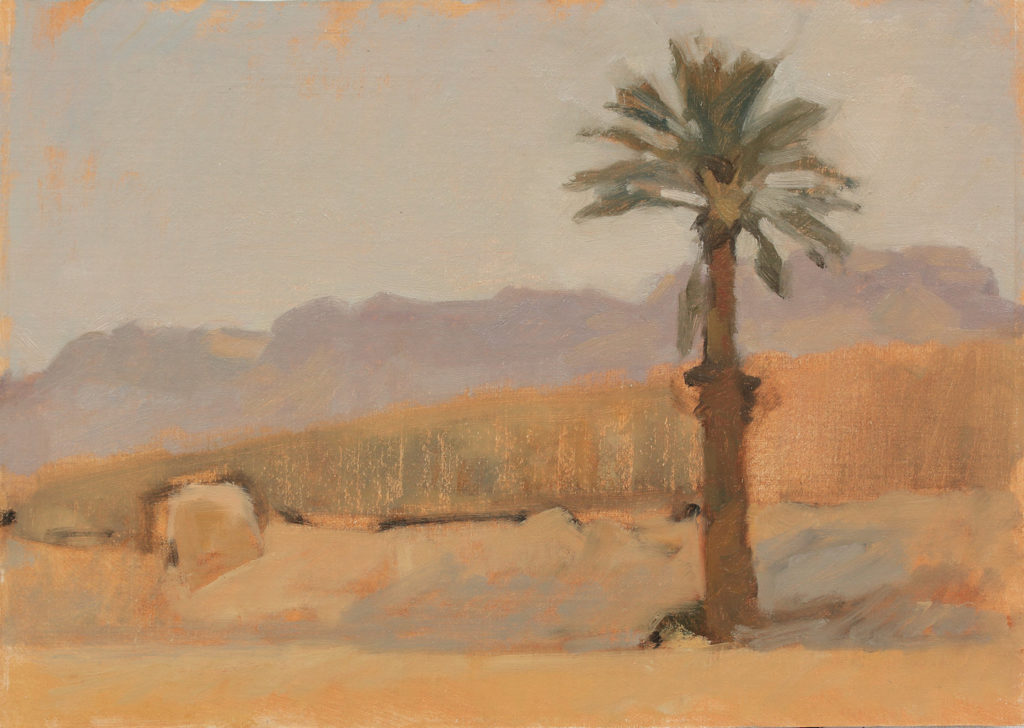
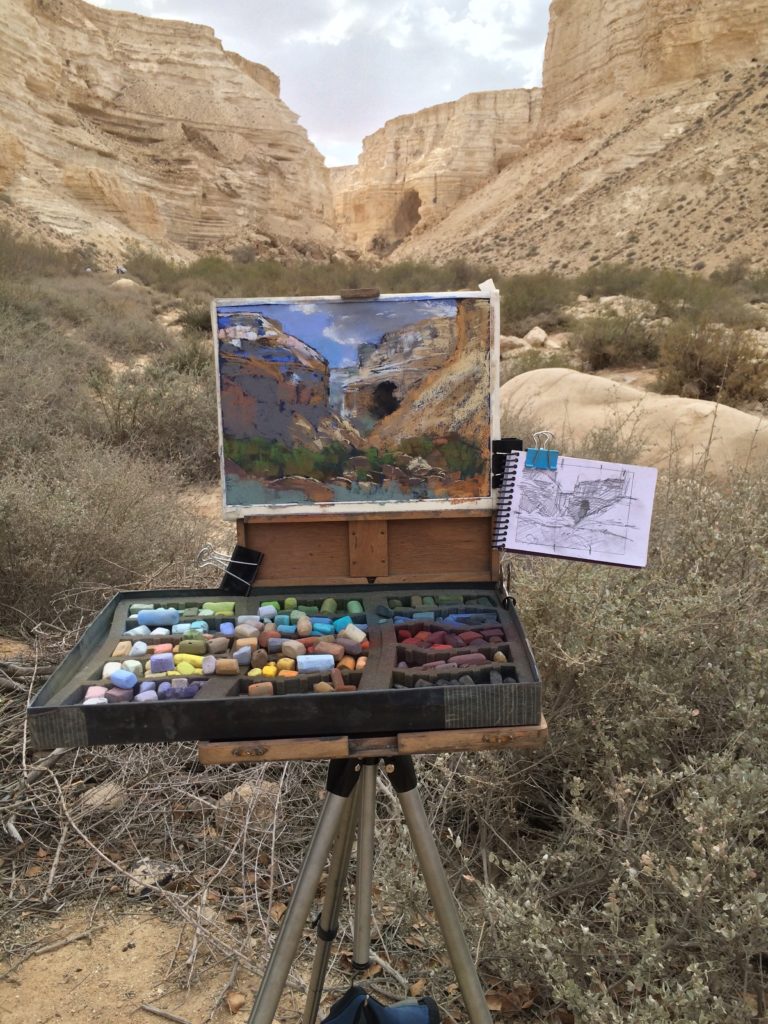
But no matter how far they went, they found signs of human habitation.
“The national park we visited had dozens of school groups with 30 or 40 kids in each of them, pouring into the park all day, and the schedule was tight, with short periods set aside for painting,” Coe says. “But the payoff was being in a place that is extraordinary and seeing unique landscapes. It was great being in these special places. And it was interesting — I definitely felt that there is no such thing as untouched wilderness in this part of the world. Every place that we visited, no matter how far out, had been trampled, manipulated, built upon, basically the ruins of our civilization. Our history is there, all over. You think you are in a remote spot, but then you see old stonework or rocks that have clearly been moved by humans. You feel a sense of history. The Mideast has had a high density of people living there for eons.”
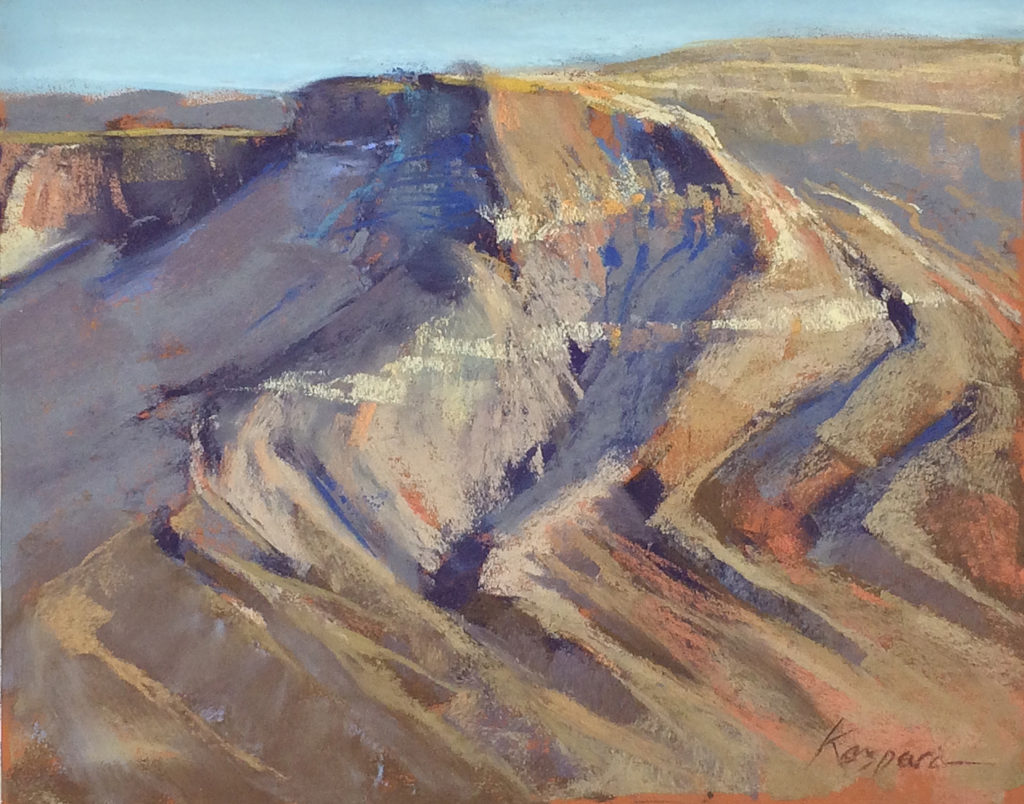
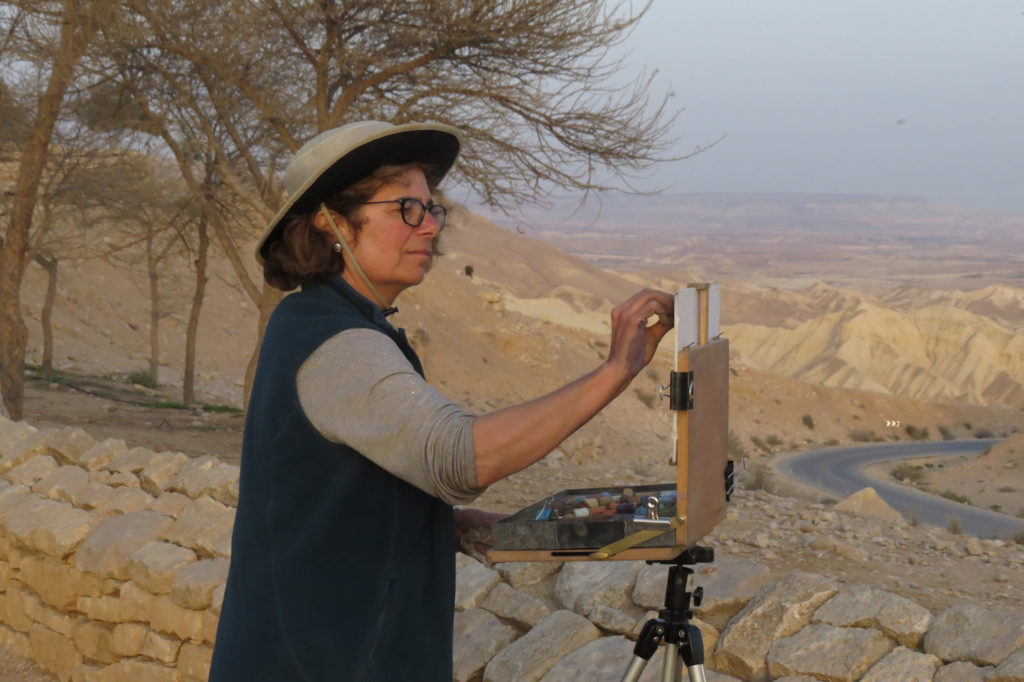
But in the last few decades, the impact of humans on the area has been heightened. “The Dead Sea is at risk because it is being overly exploited by industry,” says Coe. “So much water has been extracted for irrigation and for the salt industry that it is shrinking rapidly. In 40 years experts say it will be gone if something isn’t done. The lowering of the water level is also causing sinkholes. You see buildings that are boarded up because of this, and clusters of sinkholes have swallowed entire buildings.”
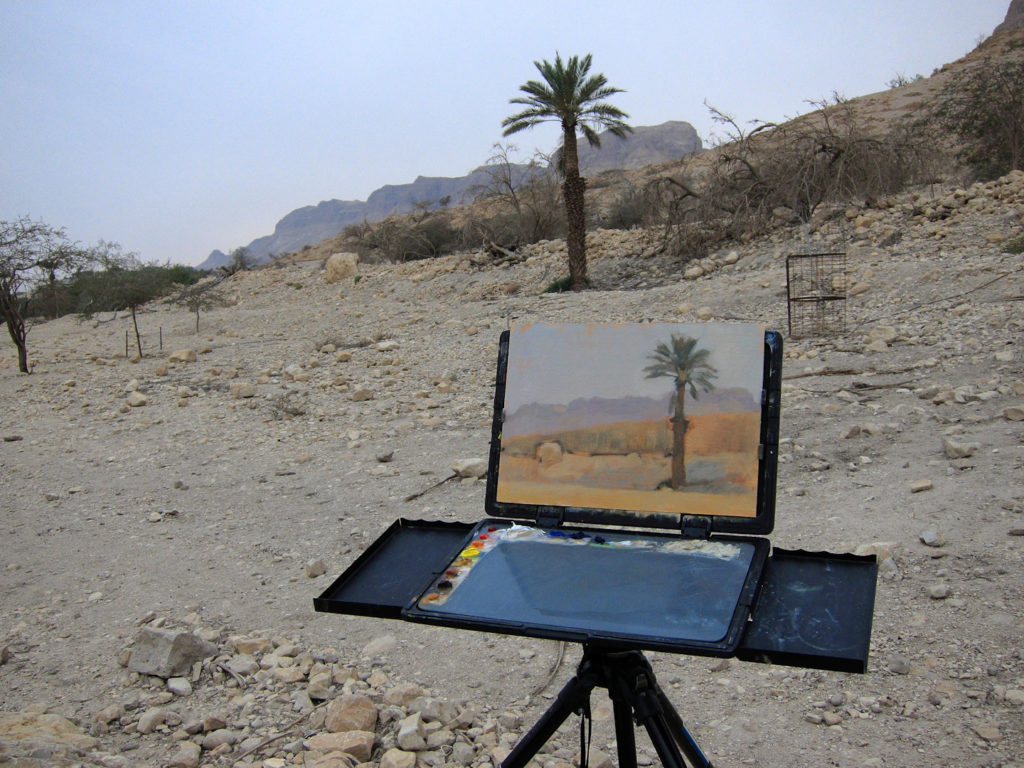
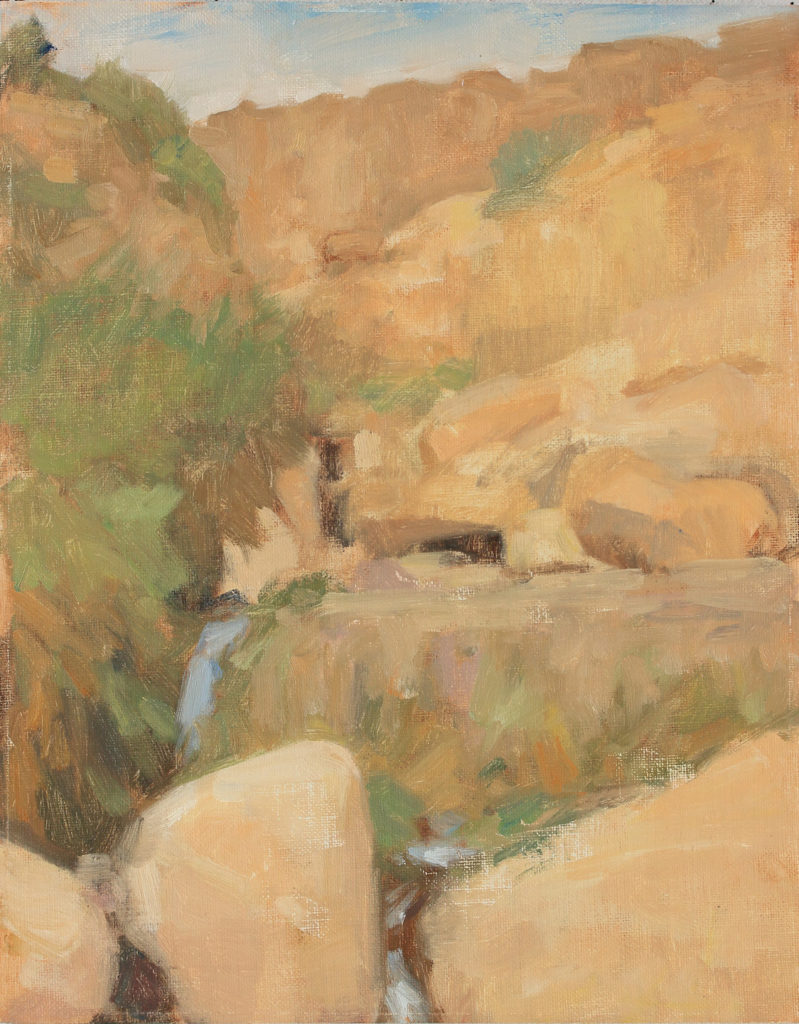
Most of the artists on the trip were wildlife artists, equipped with high-powered scopes and adept at making rapid watercolor sketches of birds and other creatures. Coe and Kaspari were paying at least equal attention to the landscape. “I was concentrating strictly on the habitat,” says Coe, who in addition to being a plein air painter is a well-respected painter of birds. “Some great field artists were there, and they could draw or paint what they saw in a matter of minutes. They were focused on birds. I saw no need to compete with them. I’m incredibly impressed with what they can do, but they can’t do what I can do. I can paint en plein air. That was my strength, and that was how I could make a contribution that was different from the others’ contribution. Why do a poor copy of what other people can do very well when I can do something else?”
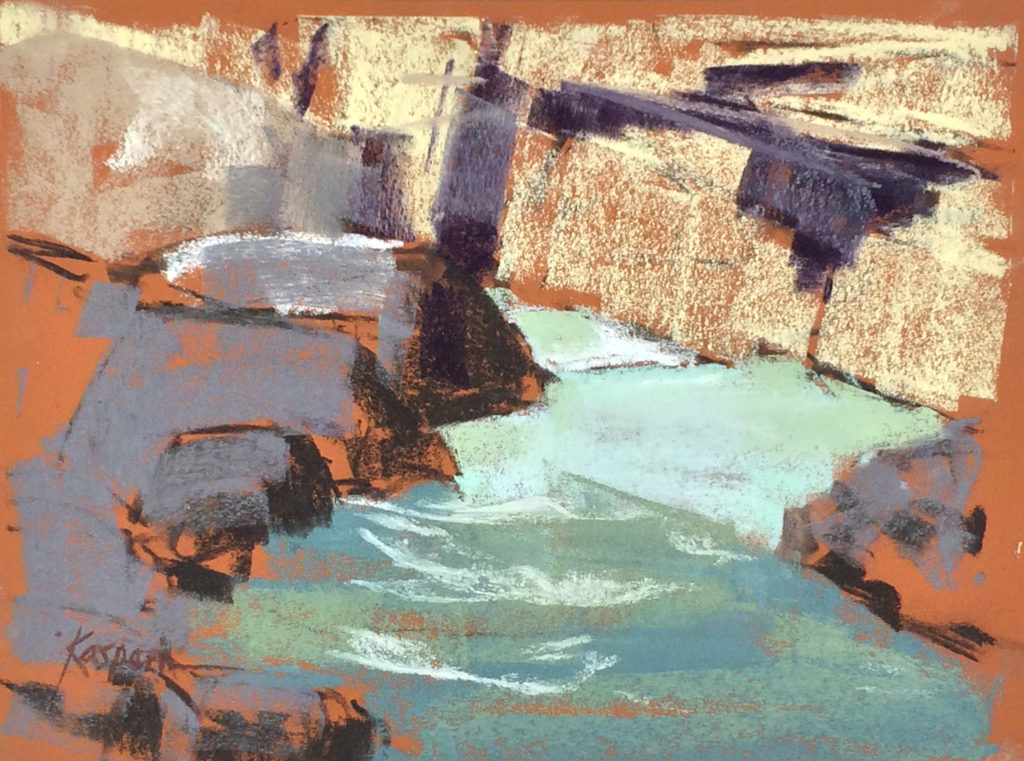
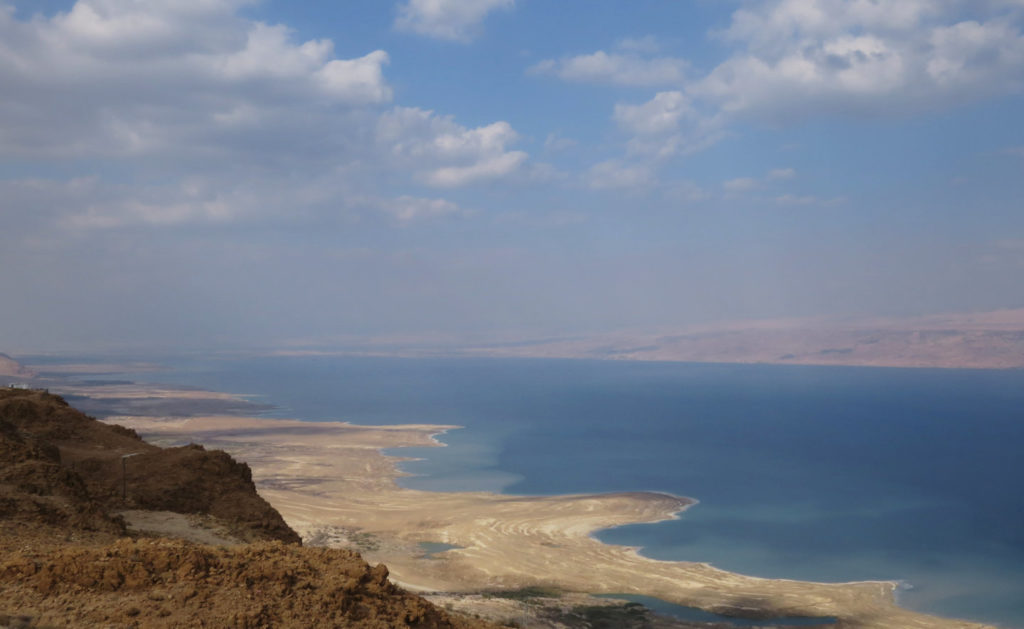
Coe was one of only two people working in oil on the trip, and this choice was not ideal, given the busy itinerary. The New York State artist had to gauge whether he’d be in a location long enough to get a good plein air piece done, or if he should just focus on taking the best reference photographs. “It was designed to be a 50-50 split of painting and viewing for photos,” says Coe. “A few of the artists were amazing and could look through a scope and in 15 minutes paint a bird. It didn’t work out quite as well for me, so I painted when I had a big block of time. You only get one shot at a trip like this.”
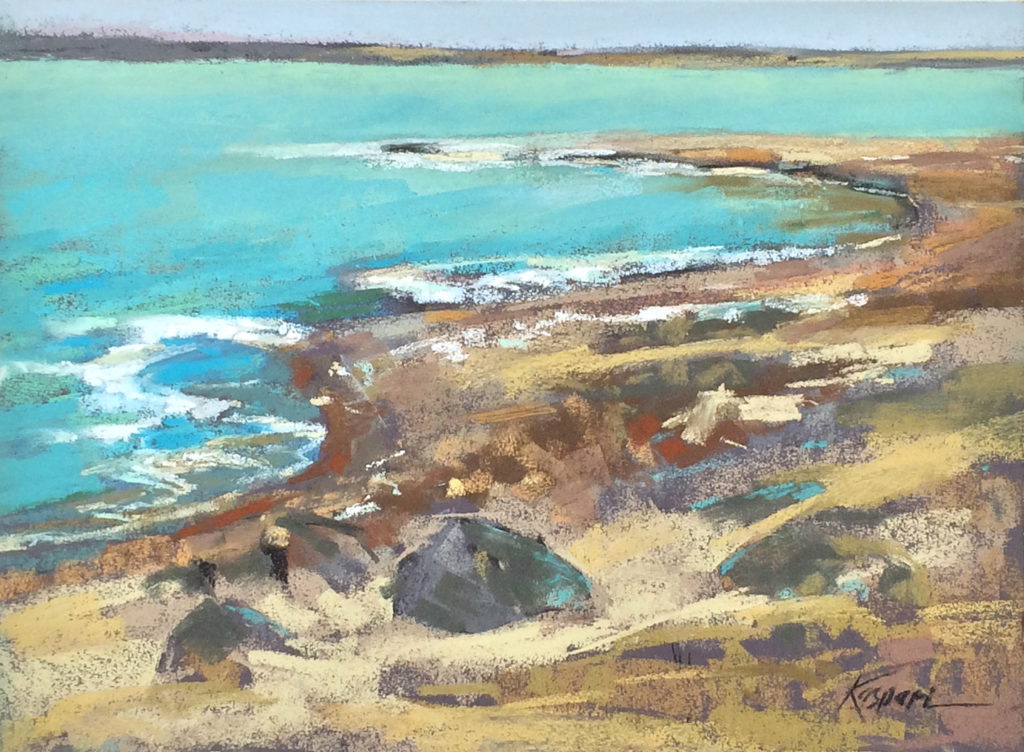
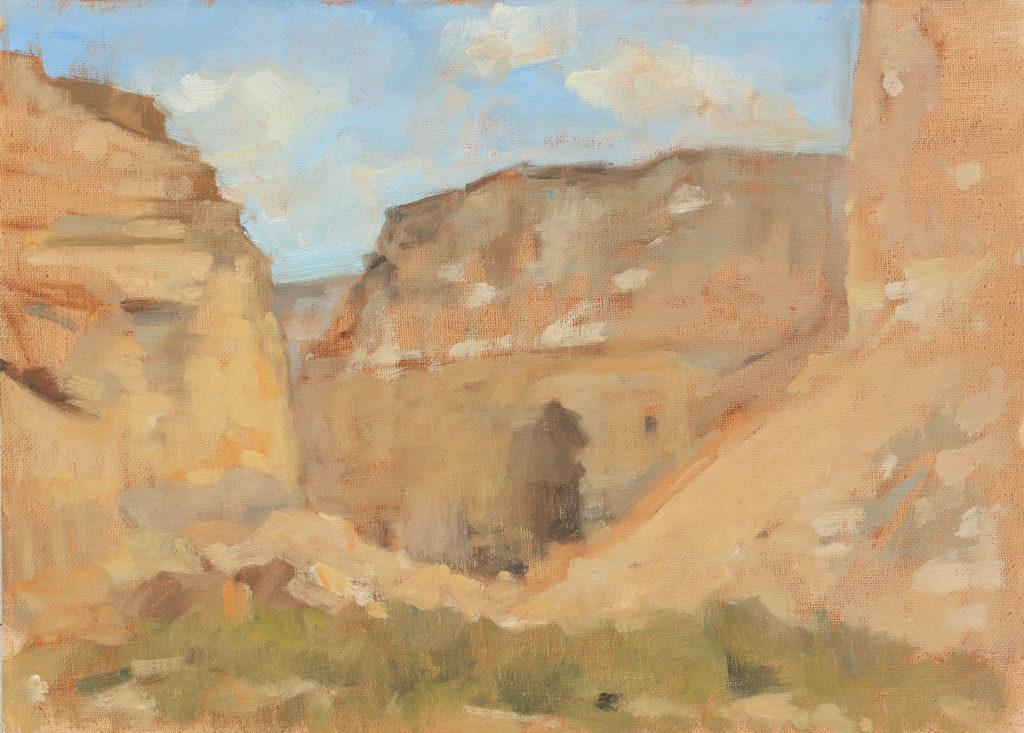
The sunlight was harsh and the wind was sometimes strong, but the arid climate did have its advantages. Before the trip, Coe consulted with Scott Gellatly at Gamblin Artists Colors about the best paint to take on a trip to ensure that the pieces dry quickly enough for safe transport. “I took Gamblin FastMatte alkyd titanium white, their quickest-drying white paint,” he says. “It was almost too quick-drying — it was very stiff on my palette. I had to soften the paint up with some medium. But my paintings were touch-dry the next day and totally dry after two days. I didn’t have to worry about keeping them apart in my luggage.” Although Coe usually paints on linen mounted on Masonite, he mounted the linen to 3/16” Gatorbord for this trip to cut down on the weight.
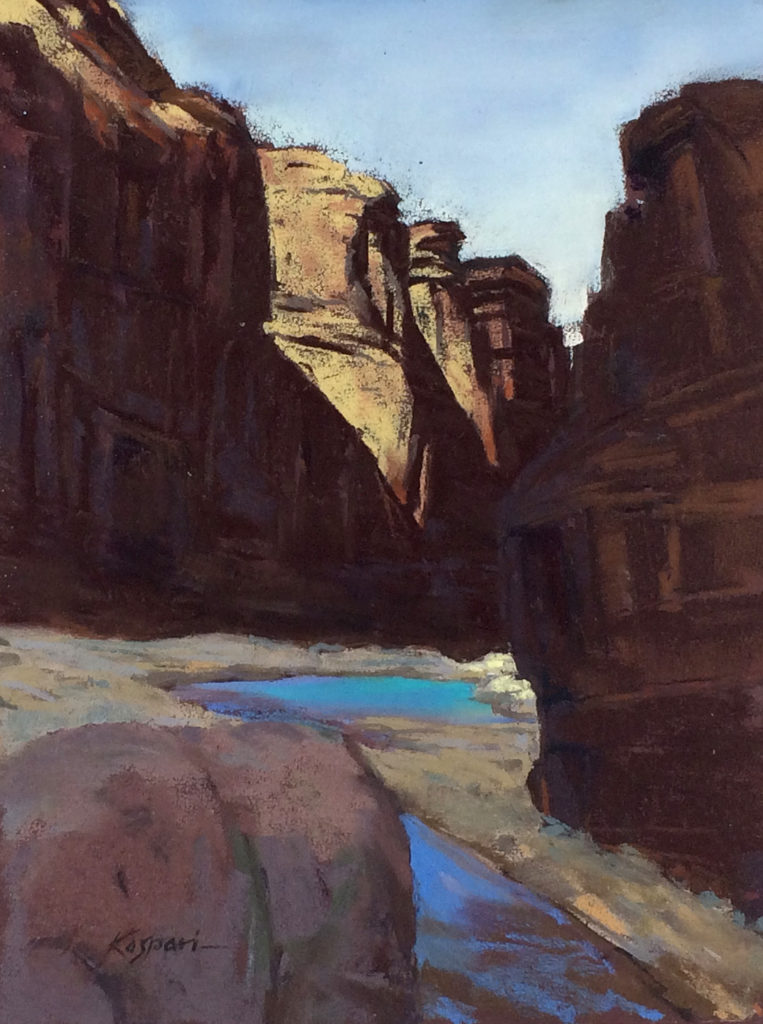
Kaspari found that the Dead Sea area called for a different color palette than she expected. “The dramatic arid landscapes were subtly colored in tones of tan and gray, with very little vegetation,” says Kaspari. “I found myself wishing I’d brought a grayer, more high-key palette. Middle values, especially greens and reds, went almost unused. The group was trying to keep to a schedule and sometimes had to work fast. There was one upside to keeping a rapid pace, however: It forced me to paint more loosely.”
So what was all this for? The participating artists all came away with their own treasure troves of photos, studies, paintings, and memories. The organization behind the trip sees a multi-media product that includes music, too. The world-renowned musician Paul Winter was along for the ride as well.
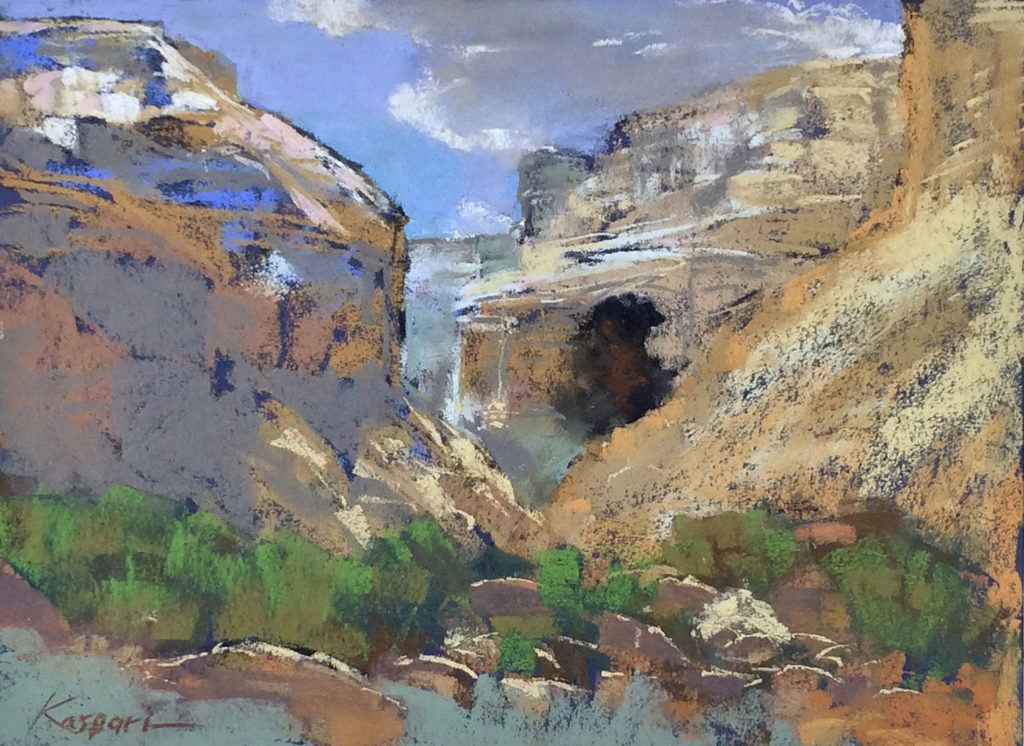
“They’ve been around for about 25 years, and they pick projects where there’s an endangered species and drop in with crew of field artists and other artistic folks,” says Coe. “It’s a big project that includes teaching, art, music, and publicity to place around an endangered habitat. In the end, it generates media, sales from artwork, exhibits, books —and years of attention on a particular place. It’s a good cause.”

